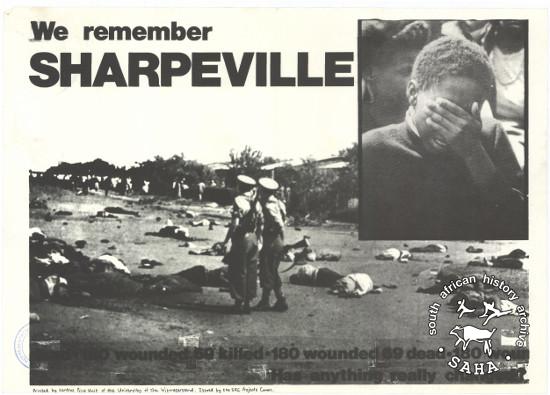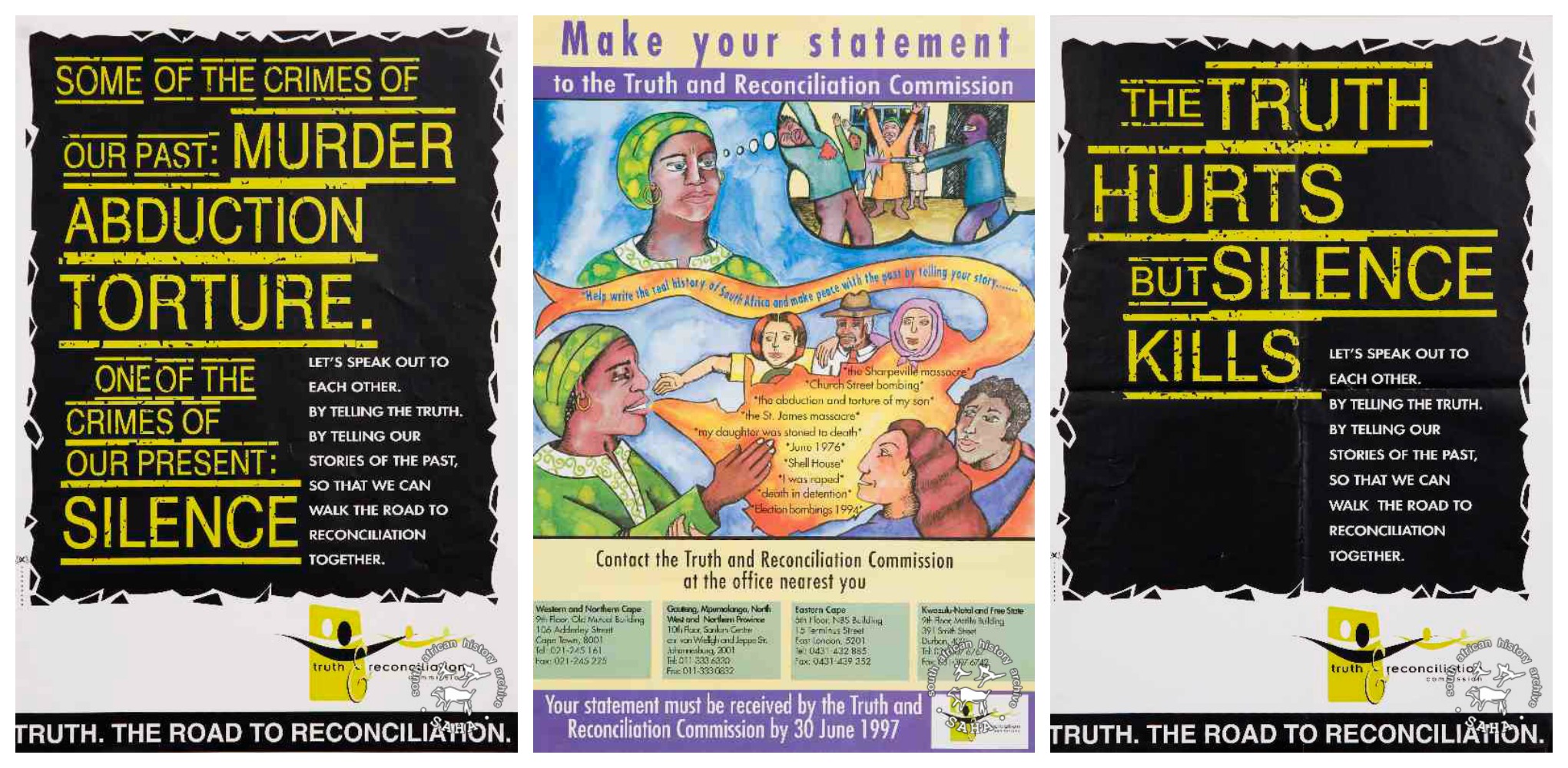A reflection from SAHA's Right to Truth Project intern, Polite Chauke, for Human Rights Day 2015
History, despite its wrenching pain, cannot be unlived, but if faced with courage, need not be lived again
~ Maya Angelou
 In South Africa, Human Rights Day is the day we commemorate the death of 67 civilians and 180 others injured on the 21st of March 1960 in Sharpeville, Johannesburg in the fight against the oppressive apartheid system. In the 46 years of apartheid South Africa, the Sharpeville Massacre was one of the many tragedies that marked the rebellion against this discriminatory system.
In South Africa, Human Rights Day is the day we commemorate the death of 67 civilians and 180 others injured on the 21st of March 1960 in Sharpeville, Johannesburg in the fight against the oppressive apartheid system. In the 46 years of apartheid South Africa, the Sharpeville Massacre was one of the many tragedies that marked the rebellion against this discriminatory system.
Although the knowledge of the horrific nature of the struggle for freedom was well known, it was through the establishment of the Truth and Reconciliation Commission (TRC) in 1995 that brought some truths into light.
The TRC was mandated to facilitate political transition by investigating human rights violations committed during the political struggle. It was through this process that the darkness of apartheid was unveiled not only to South Africans but the world. The TRC brought together stories that came from victims and confessions from perpetrators about the human atrocities committed; it sought to redress these mass violations through restorative justice.
The work of the TRC depended on revisiting ‘memories’ and ‘factual’ details, narratives about our dark history for the purpose of restoring dignity and humanity to those who have suffered and those who caused suffering unto others. This was one of the ways that South Africa transitioned into its democracy. The Sharpeville massacre, much like the 1976 Soweto uprising and other mass protests, remained a powerful symbol of the struggle against racial oppression and human rights violation.
The magnitude and intensity of brutality and violations of an oppressive system like that of the apartheid government is demonstrated by Joe Mamasela, a former Vlakplaas Askari. Mamasela was one of the officers that were involved in the killing of 3 Eastern Cape activists, known as the Pebco 3. He graphically recounts the extent of brutality during apartheid South Africa, narrating the suffering of the Pebco 3 in their final moments at the hands of their torturers in Vlakplaas:
They were tortured severely, they were savaged; they were brutalized…
My role in the torture was to strangle them and stifle them so they couldn’t make enough noise
The TRC also personalized the nature and impact of violation under apartheid. Joyce Mthimkhulu, the mother of struggle activist Siphiwo Mthimkhulu’s longing for closure about her son’s disappearance highlights the intensity of emotions when acts of violation resulted in the disappearance and deaths of loved ones. Longing for closure; she pleaded:
If we can just get a bone, or a nail, which we can say is Siphiwo’s, until then we can't forget.
It is through these stories of horrific human abuses that we are reminded that the road to democracy was paved with brutality, violence and death. But it is also through stories of healing like when 4 of the 7 mothers of the Gugulethu 7, forgave one of the police men involved in their the sons’ killings that both highlights reconciliation and serves as a memory of the painful cost of democracy. Although the TRC processes contributed to the remarkable and resilient democratic South Africa, it does not mean we have a perfectly reconciled South Africa.

There is a need to avoid the temptation to forget or the need to ‘get over’ the past. This attitude could disguise the reality that violation of human rights can happen in the present day - for instance, the recent xenophobic attacks in Soweto; the sexual attack of a coloured pupil at the hand of his white peers in Northern Cape and many other incidents since 1994.
It is these events in post apartheid South Africa that indicate we are not a fully reconciled country but rather a country in the healing process.
Between 1995- 2000 the TRC paved a way for South Africa to confront the truth about our past and to lay the foundation to reconciliation; and 21 years into our democracy we are still in the process of healing, reconciling and restoring our dignity as a country.
It is through these memories that the truth about South Africa in its dark days is revealed, hence it important that we look back at history as a tool to look into ourselves to restore human dignity, restore truth and to heal every day. Every day as a country we dangle between a painful past and continuous uncertain future. Furthermore, contemporary unrests that are embedded in racial lines are there to serve as reminder that the work of the commission should be undertaken every day. As we celebrate March 21st let us remember that human rights, restoring dignity and reconciliation remain work that we need to be undertaking each and every day in the long process of healing a nation.
Visit the SABC /SAHA TRC website
Visit The Battle against Forgetting: human rights and the unfinished business of the TRC publication page
Visit the Guide to archival sources relating to the South African Truth and Reconciliation Commission publication page
Visit the Katorus Stories publication page
See inventory for the SAHA Poster collection (AL2446)





 In South Africa, Human Rights Day is the day we commemorate the death of 67 civilians and 180 others injured on the 21st of March 1960 in Sharpeville, Johannesburg in the fight against the oppressive apartheid system. In the 46 years of apartheid South Africa, the Sharpeville Massacre was one of the many tragedies that marked the rebellion against this discriminatory system.
In South Africa, Human Rights Day is the day we commemorate the death of 67 civilians and 180 others injured on the 21st of March 1960 in Sharpeville, Johannesburg in the fight against the oppressive apartheid system. In the 46 years of apartheid South Africa, the Sharpeville Massacre was one of the many tragedies that marked the rebellion against this discriminatory system. 